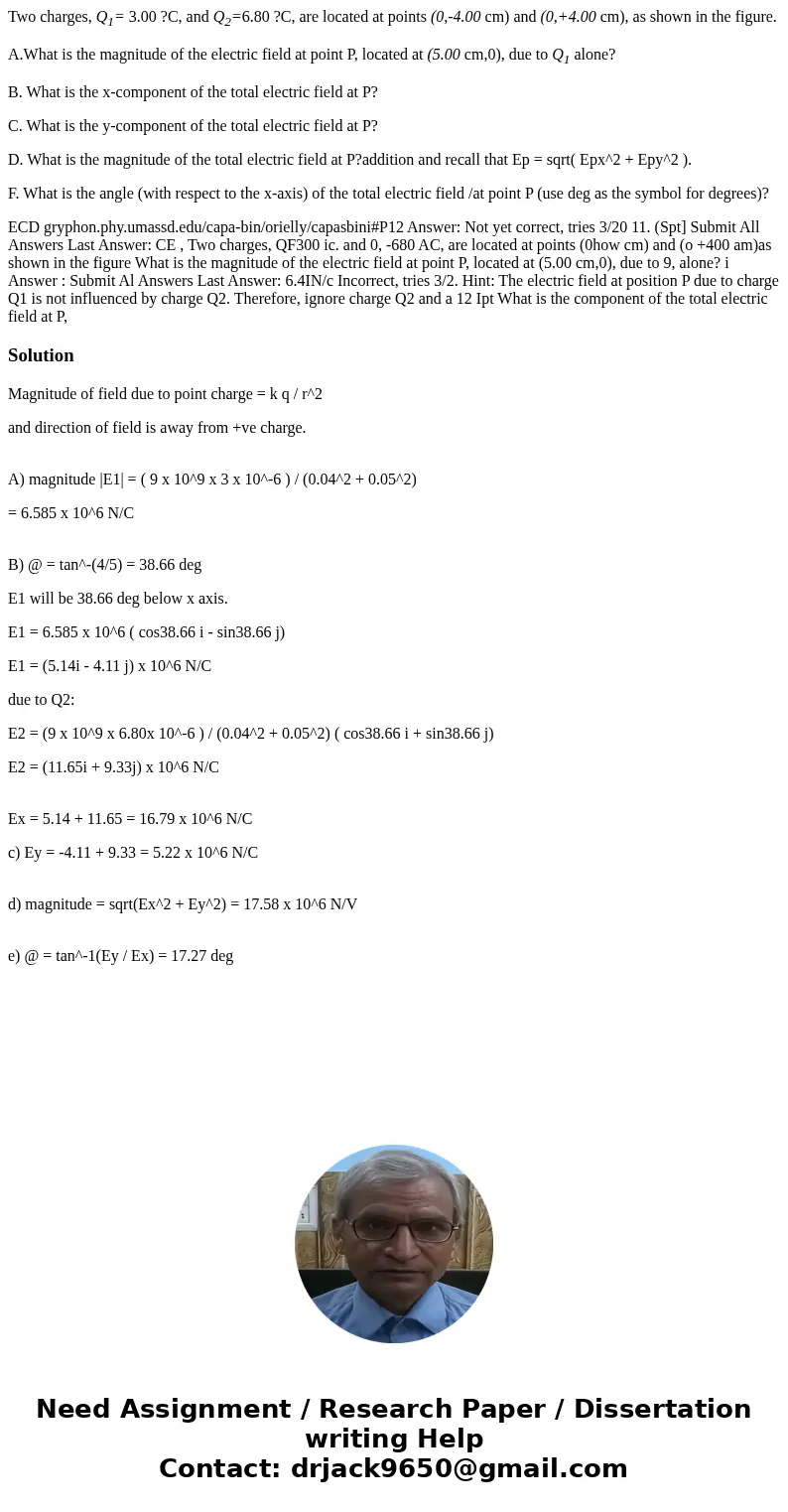Two charges Q1 300 C and Q2680 C are located at points 0400
Two charges, Q1= 3.00 ?C, and Q2=6.80 ?C, are located at points (0,-4.00 cm) and (0,+4.00 cm), as shown in the figure.
A.What is the magnitude of the electric field at point P, located at (5.00 cm,0), due to Q1 alone?
B. What is the x-component of the total electric field at P?
C. What is the y-component of the total electric field at P?
D. What is the magnitude of the total electric field at P?addition and recall that Ep = sqrt( Epx^2 + Epy^2 ).
F. What is the angle (with respect to the x-axis) of the total electric field /at point P (use deg as the symbol for degrees)?
ECD gryphon.phy.umassd.edu/capa-bin/orielly/capasbini#P12 Answer: Not yet correct, tries 3/20 11. (Spt] Submit All Answers Last Answer: CE , Two charges, QF300 ic. and 0, -680 AC, are located at points (0how cm) and (o +400 am)as shown in the figure What is the magnitude of the electric field at point P, located at (5.00 cm,0), due to 9, alone? i Answer : Submit Al Answers Last Answer: 6.4IN/c Incorrect, tries 3/2. Hint: The electric field at position P due to charge Q1 is not influenced by charge Q2. Therefore, ignore charge Q2 and a 12 Ipt What is the component of the total electric field at P,Solution
Magnitude of field due to point charge = k q / r^2
and direction of field is away from +ve charge.
A) magnitude |E1| = ( 9 x 10^9 x 3 x 10^-6 ) / (0.04^2 + 0.05^2)
= 6.585 x 10^6 N/C
B) @ = tan^-(4/5) = 38.66 deg
E1 will be 38.66 deg below x axis.
E1 = 6.585 x 10^6 ( cos38.66 i - sin38.66 j)
E1 = (5.14i - 4.11 j) x 10^6 N/C
due to Q2:
E2 = (9 x 10^9 x 6.80x 10^-6 ) / (0.04^2 + 0.05^2) ( cos38.66 i + sin38.66 j)
E2 = (11.65i + 9.33j) x 10^6 N/C
Ex = 5.14 + 11.65 = 16.79 x 10^6 N/C
c) Ey = -4.11 + 9.33 = 5.22 x 10^6 N/C
d) magnitude = sqrt(Ex^2 + Ey^2) = 17.58 x 10^6 N/V
e) @ = tan^-1(Ey / Ex) = 17.27 deg

 Homework Sourse
Homework Sourse